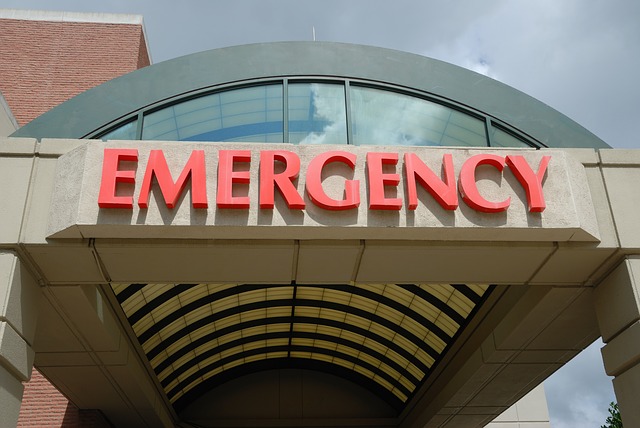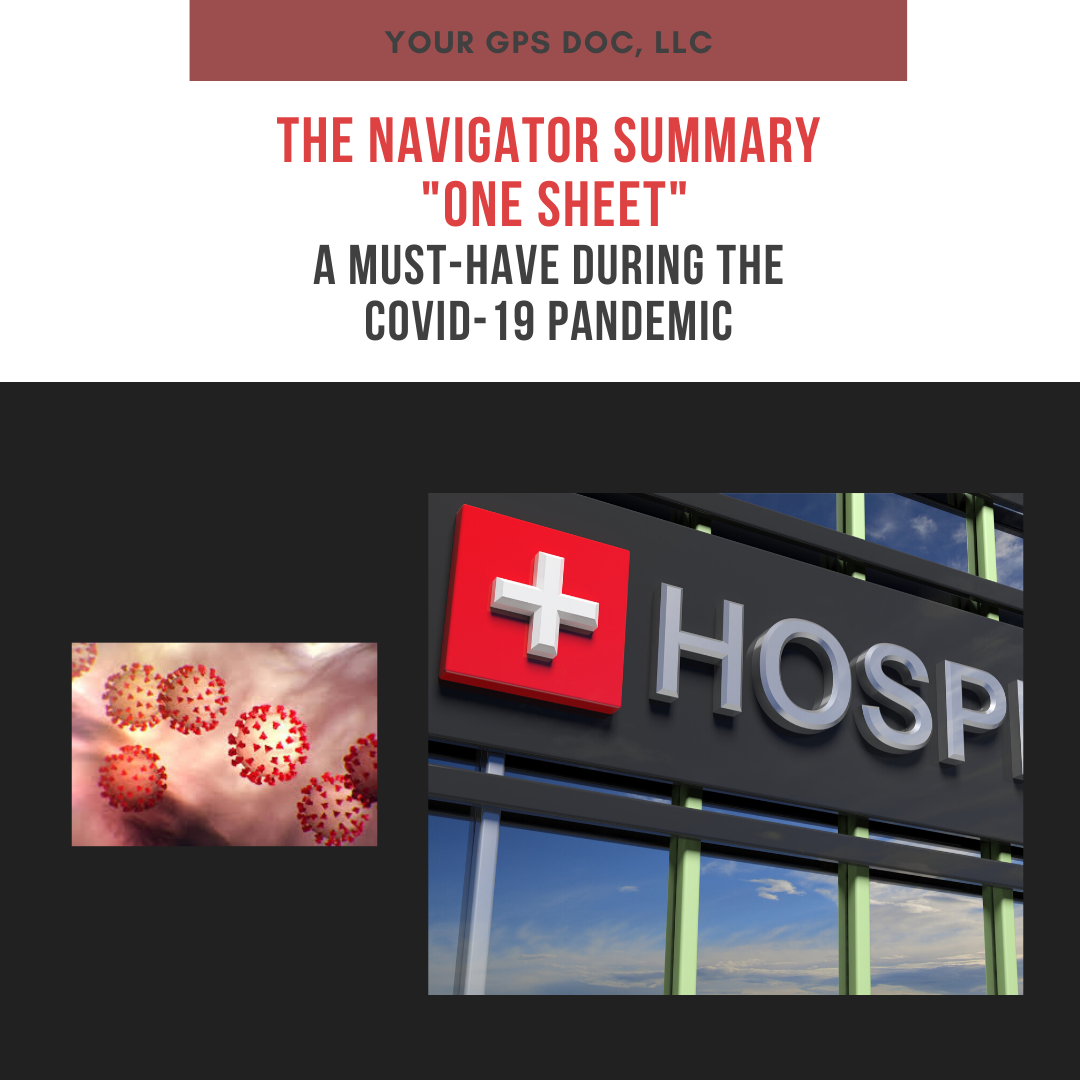There are two extremes among my family and friends–those who go to the Emergency Room for paper cuts and those who would wait until their pinky finger was literally hanging by a “thread” before seeking medical care. I say this in jest, to some extent, but we all know people who fit into one or both of these categories. This variability is partly explained by personality and risk tolerance. However, at the end of the day, it’s a very complicated issue. It can be difficult to know when to seek care in an Emergency Room. Last spring when I awakened suddenly with severe abdominal pain, I mentally reviewed the possibilities and realized I could have anything from indigestion to a ruptured abdominal aortic aneurysm (a life-threatening condition involving the main blood vessel that delivers blood to the body). Despite my extensive medical knowledge, I wasn’t sure what to do. So how can we expect lay people to navigate this issue?
An article recently published in the LA Times reported that Blue Cross and Blue Shield of Georgia informed its members that they will not pay the claim for individuals who are treated in the Emergency Room (ER) for a problem later deemed to have not been an emergency. Really? The notice used clarifying language like “prudent layperson” and “average knowledge of medicine and health”, but who makes that determination? Should it be made by insurance company executives?
There is no doubt that Emergency Rooms are busy and that these visits significantly contribute to the costs of healthcare. According to the latest National Hospital Ambulatory Medical Care Survey (NHAMCS) conducted in 2013, there were 130.4 million visits to U.S. Emergency Rooms over a 12-month period from December 24, 2012, through December 22, 2013. Only 9.3% of these visits resulted in hospital admission, but that certainly doesn’t mean none of the others were true emergencies.
There are many things that contribute to the large number of Emergency Room visits in the United States. Despite the success of the Affordable Care Act, there are millions of Americans who remain uninsured and underinsured. In addition, the significant increase in insured patients has overwhelmed primary care providers, making it difficult for some patients to be seen in the outpatient setting in a timely manner. Those with poor access to primary care tend to over-utilize the Emergency Room. Access to mental health services is also extremely poor. In many instances, the only place where individuals with depression or anxiety can get prompt care is in the Emergency Room.
I’m not aware of a validated tool to determine whether a medical problem is an emergency. The determination should not be based on the outcome. A severe headache that is later diagnosed as a migraine and improves with IV fluids and pain medications is an emergency, in my opinion. The “prudent layperson” doesn’t know if it’s an early stroke, severely elevated blood pressure, or any number of conditions that warrant prompt medical care.
Are we blaming patients for a broken health care system?
The truth is, those who abuse the Emergency Room represent a very small percent of patients, and this policy implemented by Blue Cross feels like an unfair punishment. In an effort to control costs, I predict more health insurance companies will follow suit and adopt similar policies. So what can you do to avoid being caught in the middle?
Here are 5 things you can do to become a more informed healthcare consumer when it comes to Emergency Room visits and potentially avoid insurance denials:
- Know when to seek emergency care.
A 2015 online article by Prevention lists 10 Symptoms that Warrant a Trip to the ER. The article discusses characteristics of certain injuries (such as burns or cuts) and symptoms (such as chest and abdominal pain) for which individuals should seek care in the Emergency Room. This is useful information and can be used as a guide.
*DISCLAIMER*– THIS IS NOT MEDICAL ADVICE AND THIS LIST IS NOT ALL-INCLUSIVE. If you think you are experiencing a medical emergency, by all means, please go to the Emergency Room.
2. Choose your primary care physician carefully.
There are things primary care physicians can do to help their patients avoid unnecessary ER visits. My children’s pediatrician has walk-in hours Monday-Saturday from 7:30-8:30am. This makes it easier for families to seek care outside of the Emergency Room for acute, non-emergent medical issues. Another way is to provide after-hours advice services. Instead of a voicemail message that tells patients the office is closed and to go to the Emergency Room for medical emergencies, connecting the patient to a nurse who can obtain a brief medical history and advise the patient where to seek care is very useful. My primary care physician has a few same-day appointments built into his schedule that the receptionist is not allowed to book in advance. They are reserved for acute issues that can be appropriately managed in an outpatient setting. These are just a few ways that physicians can partner with patients to improve care and ensure it is received in the appropriate setting. For more advice on how to choose a good primary care physician for yourself and your family, please read 5 Things You Need to Do When Choosing Your Primary Care Doctor.
3. Become familiar with local urgent care centers.
According to the Urgent Care Society of America, urgent care centers provide care to nearly 160 million patients annually in the U.S. This volume is expected to continue to increase. Seeking care at an urgent care center can be a great way to get timely medical care for urgent, but non-life-threatening conditions. Most centers are open on evenings, weekends, and holidays and some are even open 24/7. The wait is typically much shorter compared to the Emergency Room. Your copay for an urgent care visit is likely to be significantly lower than that for an ER visit. There are, however, some pitfalls to consider. There may not be a provider on staff who is experienced caring for children. If you are seeking care for your child, consider going to a facility with a pediatrician or family practitioner on staff, when possible. Going to an urgent care center for a life-threatening condition will delay care, which will increase the risk of a bad outcome. If you’re not sure what’s going on and you think your problem could be life-threatening or require surgical intervention, specialist consultation, etc., it’s better to go to the Emergency Room.
4. Consider using telemedicine services.
The American Telemedicine Association defines telemedicine as “the use of medical information exchanged from one site to another via electronic communications to improve a patient’s clinical health status using two-way video, email, smart phones, wireless tools and other forms of telecommunications technology.” Telemedicine is being increasingly used in both hospital and outpatient settings. Some large health insurers offer telemedicine services to their members through a third party company. There are also medical practices that provide all or some of their services via telemedicine. This can be a great option for non-urgent, non-life-threatening conditions such as sore throats, ear aches, and the common cold.
5. Know your rights and how to appeal an insurance claim.
If your claim for an Emergency Room visit is denied, you can consider filing an appeal. Review your insurance documentation to ensure you are familiar with what is covered under your plan. If you think the claim was denied unfairly or inappropriately, you can appeal the decision by writing a letter to the insurance company. You will need to provide the details regarding your symptoms, why you were concerned, why you felt you required emergent care, the results of laboratory tests, the diagnosis, and the recommended follow-up. For more information about filing appeals, please read How to File an Appeal When Your Insurance Company Refuses to Pay.
There are over 100 million Emergency Room (ER) visits in the United States every year. These visits are costly for both patients and insurers. One large insurer plans to deny claims for ER visits that were later deemed non-emergent. Other insurance companies will likely do the same. Don’t get caught in the middle. By being informed and following these 5 steps, you can become your own advocate and navigate this aspect of health care more effectively.
Have you joined the Your GPS Doc Family? If not, please click here to receive notifications about new content as well as useful worksheets and additional resources only available to Your GPS Doc subscribers.








Good points. Keep it coming.
Thank you, Paul! Please share with those who can benefit from the information.
I highly appreciate this valuable information regarding on this matter. Thank you for sharing.
You’re very welcome! I am so happy you found it helpful. Please share with others who can benefit from the information.
Article was helpful as I too am in this rotten dilemma following a **Xmas Eve ER visit** where I presented with severe abdominal \ lower back pain, high fever, vomiting, lethargy, relentless horrible cough that had persisted since early Dec. I had missed a week of work. I had been to 2 Urgent Care and 1 Primary Care visits since Dec 4 including a round of antibiotics and several prescription cough suppressants. Diagnosis could have been anything from bronchitis, flu, kidney infection to lung cancer. ER Doc performed XRay & Urology panel which to me indicates he heard my communicated symptoms.
I was awake from 3am on Xmas Eve Googling symptoms, ER nightmares, etc. After 3 hours of careful consideration, I decided I could have something serious and potentially life-threatening thus requiring urgent medical care.
The sad thing about our broken healthcare system was here I was at 3am in agony & a significant part of my ER / Not ER deliberation was being surprised with some monstrous bill and expecting my insurance company to deny, deny, deny.
Final diagnosis was Bronchitis of Bacterial nature. Insurance denied solely off of Bronchitis code did not equal codes they classify as medical emergency.
Hi Eric,
I’m so sorry to hear about your situation.I hope you will consider appealing the insurance denial. If insurance companies are to institute these policies for ER visits, they really need to apply a “prudent layperson” rule, meaning, would a prudent layperson seek care in the ER for this condition. I’m glad it was nothing too serious and I wish you the best with your healthcare journey moving forward.
Eric, Do you live in Georgia? I work at WSB-TV and am doing a story about this issue. Please email me at sheila.schutt@wsbtv.com.
I’m in the same boat as others my er claim is being denied. About a month ago had a heart attack and went to the ER within 20 mins of arriving was in the Cath Lab for angioplasty and stints. Was in icu for about 36 hours and regular bed for about 48 hours. My insurance is denying coverage since we did not get approvals before the procedures we’re done, and they were not notified untill 48 hours after it was done. So they are denying my 100000.00 Er/Cath Lab/surgery/hospital stay bill. Not really seeing the point of paying for years and years of insurance never using it, then when you need it they just deny the claims anyways. Of course will be appealing it.
What a frustrating experience. I’m glad you’re ok. That is what is most important. The hospital’s failure to obtain preauthorization should not result in you getting a larger bill. I’m glad you are appealing the decision.
Wes, Do you live in Georgia? I work at WSB-TV and am doing a story about this. Please email me at sheila.schutt@wsbtv.com
Many hospitals have a “charity” clause – if you cite financial hardship, you may be able to have a portion waived, and perhaps enter a payment plan to defer the payment very, very slowly.
That’s good to know. I still feel a legitimate ER visit should be covered by insurance and a patient shouldn’t be burdened with a payment plan.